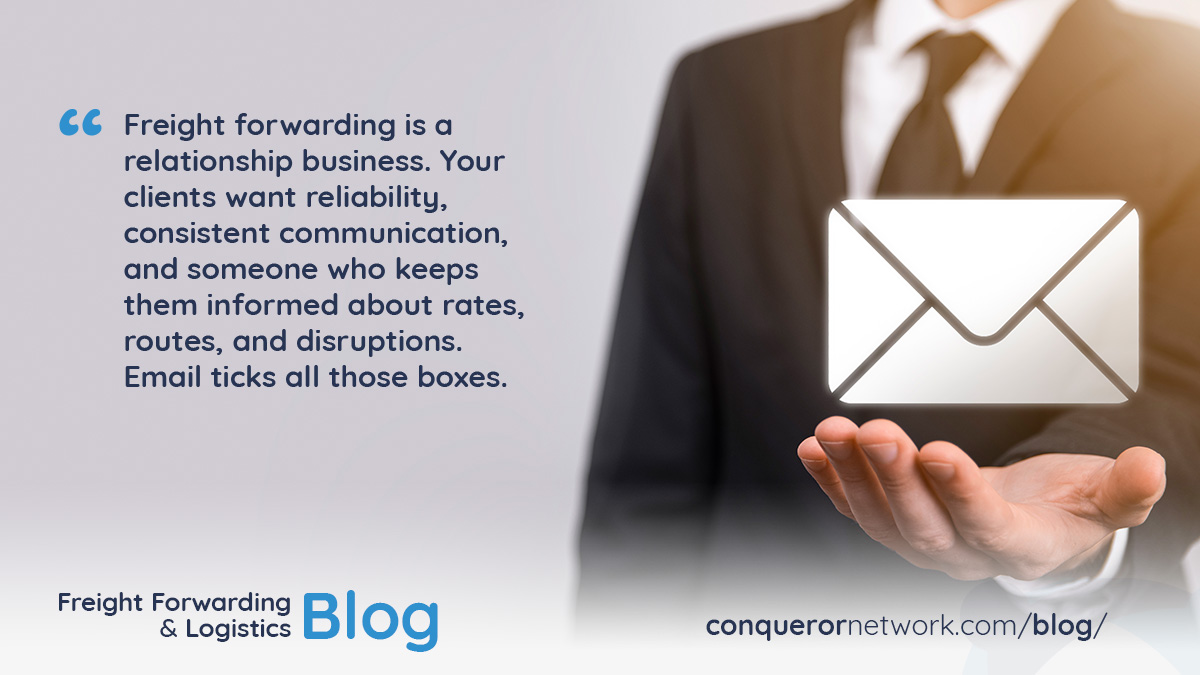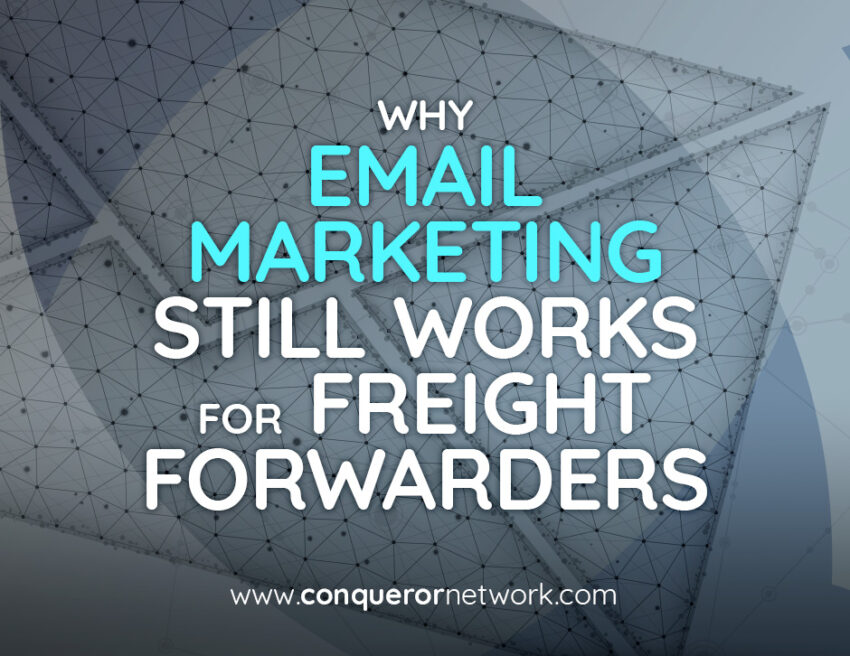In a world of social media campaigns, LinkedIn ads, and AI-driven CRMs, email marketing might sound a bit old school. But here’s the thing – email marketing for freight forwarders is still one of the most powerful and cost-effective ways to build relationships, generate leads, and keep your company top of mind for clients.
Let’s break down why email still works, how forwarders can use it strategically, and a few practical tips to get started or improve your current campaigns.

The Power of Email in Freight Forwarding
Freight forwarding is a relationship business. Your clients want reliability, consistent communication, and someone who keeps them informed about rates, routes, and disruptions. Email ticks all those boxes.
A few key reasons why it’s so effective:
-
Direct and personal – Unlike social media, where posts get buried in feeds, email lands right in your client’s inbox.
-
High ROI – Email remains one of the highest-performing marketing channels with returns of $36 for every $1 spent, according to industry studies.
-
Easy to measure – Open rates, click-through rates, and conversions give you a clear view of what’s working.
-
Scalable – Whether you’re a small forwarder or a global player, email scales with you.
In other words, it’s a low-cost, high-impact tool that keeps you connected to clients and prospects.
Types of Email Campaigns Forwarders Should Use
A successful email marketing strategy goes beyond a once-in-a-while newsletter. Here are a few types of campaigns to consider:
1. Newsletters and Market Updates
Send a monthly or quarterly update with:
-
Industry news (port congestion, new customs regulations)
-
Your company updates (new offices, services, partnerships)
-
Key rate changes or seasonal reminders
This positions you as a trusted source of information, not just a service provider.
2. Promotional Campaigns
When you have new services or special rates, email is the quickest way to tell clients. Example:
-
“New Direct LCL Service from Shanghai to Rotterdam – Book Now!”
-
“Peak Season Space Alert – Secure Your Spot Early”
These emails create urgency and drive bookings.
3. Lead Nurturing Sequences
For prospects who contacted you but haven’t booked yet, create a series:
-
Introductory email about your company
-
Case study of a similar client you helped
-
Limited-time offer or invitation to connect
This builds trust and nudges them closer to doing business with you.
4. Customer Retention Emails
Email is also great for after-sales service:
-
Thank-you notes after major shipments
-
Follow-ups for feedback
-
Invitations to webinars or networking events
Keeping existing customers engaged costs far less than finding new ones.
Crafting Emails That Get Opened
You can send 1,000 emails a month, but if no one opens them, they don’t matter. Here’s how to make sure your emails actually get read:
1. Subject Lines Matter
Keep them short, clear, and benefit-focused. Examples:
-
“Your September Freight Market Update”
-
“Avoid Port Delays: What You Need to Know”
-
“Special Rate – Air Freight to LATAM This Week”
2. Keep It Simple
People skim emails. Use short paragraphs, bullet points, and bold text to highlight key info.
3. Always Add a CTA (Call-to-Action)
Tell readers what to do next such as request a quote, visit your website, or contact you for more info.
4. Use a Professional Design
Branded templates with your logo, colors, and clean formatting make you look trustworthy. Tools like Mailchimp or HubSpot make this easy.
Personalization Is the Game Changer
Generic mass emails won’t get results. Clients expect communication that speaks to them.
-
Segment your list – Separate importers from exporters, air freight users from ocean freight users.
-
Personalize with data – Mention their company name, preferred trade lane, or last service used.
-
Time it right – Schedule sends based on time zones or known buying cycles.
Even small touches like a customized greeting or a reference to their last shipment can dramatically improve engagement.
Avoiding the Spam Folder
One of the biggest fears forwarders have about email marketing is ending up in spam. Here’s how to avoid it:
-
Use a professional email domain (no @gmail or @yahoo)
-
Don’t overuse salesy words like “FREE” or “ACT NOW!!!”
-
Keep a healthy text-to-image ratio; too many images can trigger spam filters
-
Make sure recipients have opted in or at least had a prior business relationship with you
-
Include a clear unsubscribe option to stay compliant with anti-spam laws
Tracking and Improving Results
The beauty of email marketing for freight forwarders is that it’s easy to track performance. Pay attention to:
-
Open Rate – Are people opening your emails? If not, tweak your subject lines.
-
Click-Through Rate (CTR) – Are they clicking links? If not, make your CTA more prominent.
-
Conversions – Are emails leading to quote requests or bookings?
Use A/B testing to experiment with subject lines, send times, and content styles until you find what works best.
How Email Complements Other Marketing Efforts
Email doesn’t replace social media or digital ads, it works alongside them. Post a new case study on LinkedIn? Promote it via email. Launch a video on your YouTube channel? Send the link to your subscribers.
This cross-channel approach keeps your message consistent and gives multiple touchpoints for clients to engage with you.
Quick Checklist to Get Started
Here’s a simple roadmap to set up email marketing if you haven’t already:
-
Build or clean your email list (importers, exporters, prospects, partners).
-
Choose an email marketing platform (Mailchimp, Constant Contact, Brevo).
-
Create a branded template.
-
Plan your content calendar, newsletters, promotions, market updates.
-
Write clear, concise copy and double-check links before sending.
-
Monitor results and adjust your strategy monthly.
Final Thoughts
Email might not be flashy, but it works. For freight forwarders, where trust and timely updates are everything, it’s one of the most effective tools to stay connected with clients, win repeat business, and fill your sales pipeline. By combining personalization, clear messaging, and consistent scheduling, email marketing for freight forwarders can turn casual readers into loyal customers and keep your company front and center when it’s time to ship.


